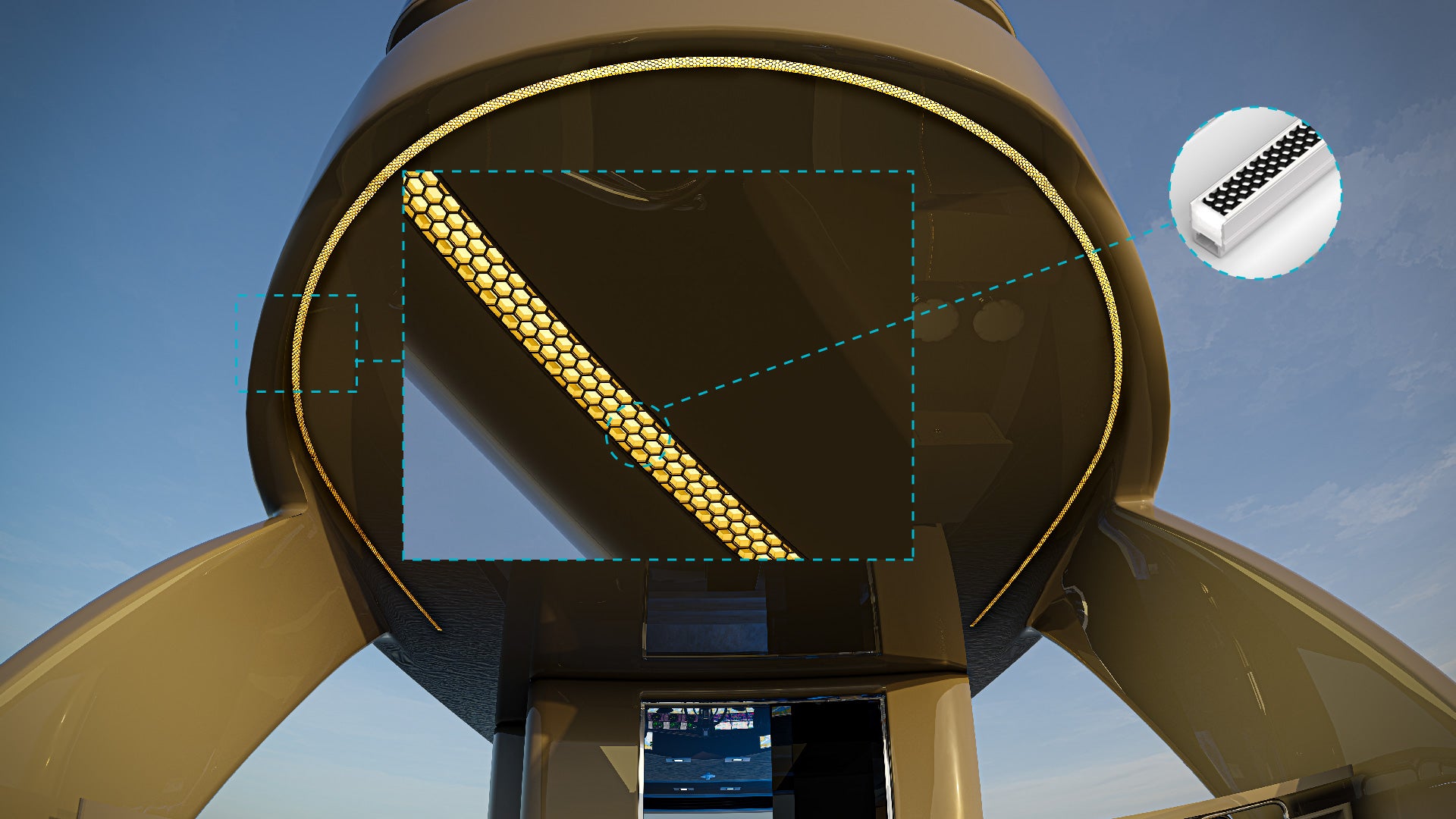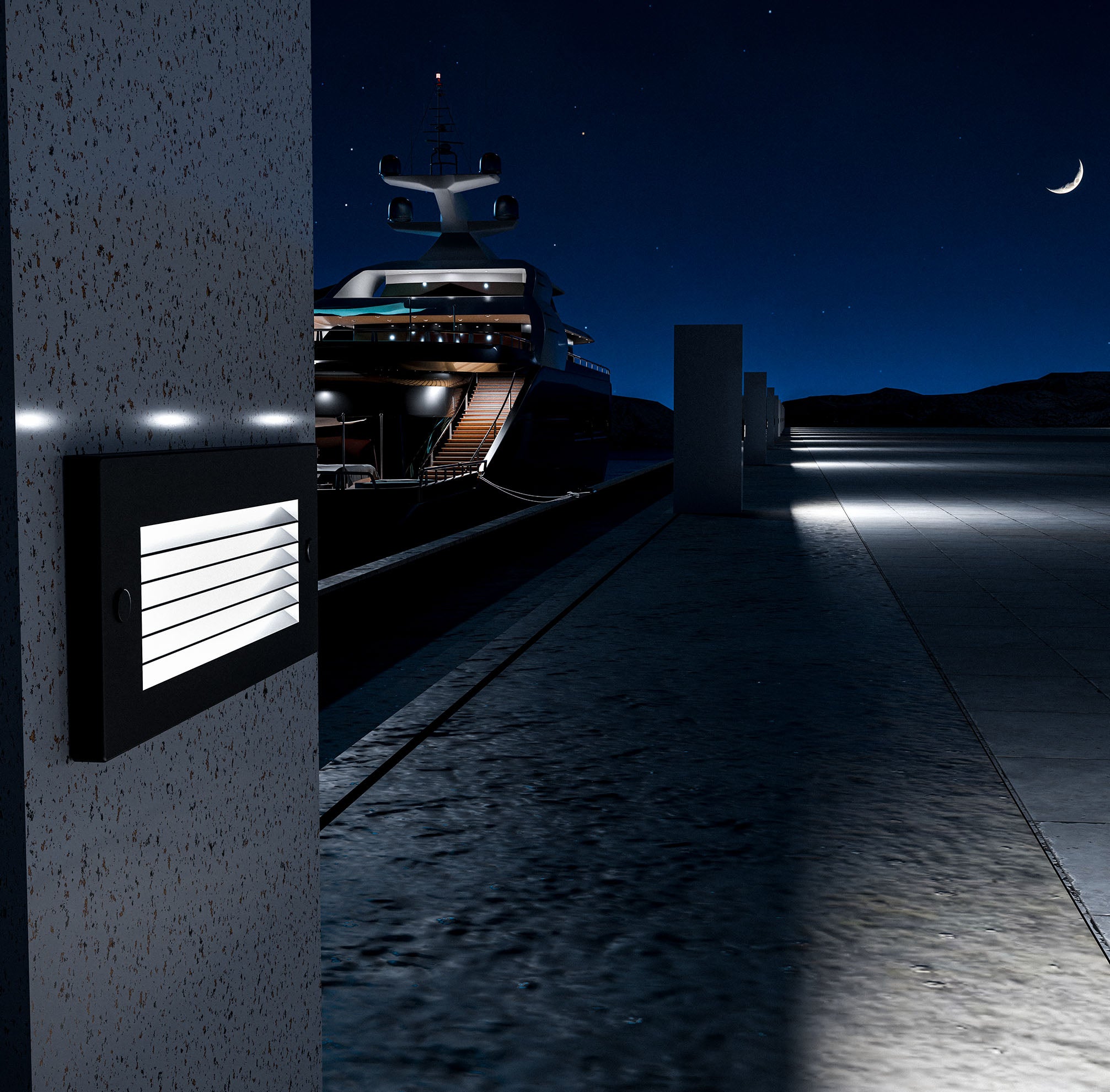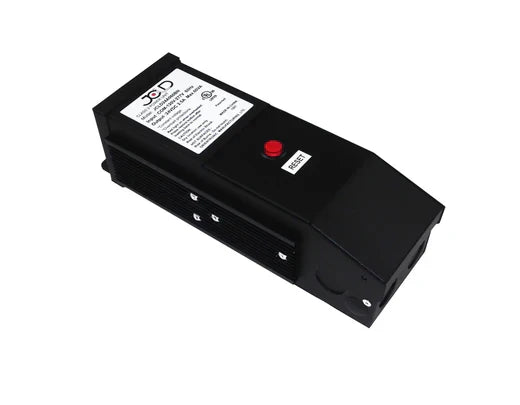LED lighting has revolutionized the way we illuminate our homes, workplaces, and public spaces. Offering energy efficiency, longevity, and a range of design options, LEDs are becoming the go-to choice for lighting solutions. However, to ensure your LED lights perform optimally, it's crucial to understand the role of LED drivers. This guide provides an in-depth look at what LED drivers are, why they're essential, and what to consider before making a purchase. We'll also explore how K2 Lighting offers high-quality LED drivers to meet various needs.
What Is an LED Driver?
Definition and Role
An LED driver is an electrical device that regulates the power to an LED or a string of LEDs. Much like how a ballast works for fluorescent lamps, an LED driver provides LEDs with the appropriate amount of electricity to function correctly. It converts the high-voltage, alternating current (AC) from your power supply to the low-voltage, direct current (DC) that LEDs require.
Why LED Lights Need Drivers
LEDs are semiconductor devices that need precise electrical conditions to operate efficiently. Unlike traditional incandescent bulbs that can be connected directly to a power source, LEDs require a constant and stable current to prevent flickering, dimming, or even damage. Without an LED driver, the fluctuations in voltage from a standard power supply can cause inconsistent performance or shorten the lifespan of your LEDs.
Key Functions of an LED Driver
- Voltage Regulation: Ensures that the voltage supplied matches the LED's requirements.
- Current Regulation: Maintains a constant current to prevent overheating or under-powering.
- Protection Features: Guards against voltage spikes, surges, and other electrical anomalies.
Types of LED Drivers
Understanding the different types of LED drivers is essential for selecting the right one for your lighting system.
Constant Current Drivers
Definition: Constant current drivers supply a steady current (measured in milliamperes, or mA) while allowing the voltage to vary depending on the load. They are designed to operate LEDs that require a fixed output current and can handle a range of voltages.
Applications
- High-Power LEDs: Often used in applications like downlights, spotlights, and other fixtures where precise current control is essential.
- Architectural Lighting: Ideal for installations requiring consistent brightness and color.
Advantages
- Stable Performance: Provides consistent light output.
- Prevents Overcurrent: Protects LEDs from current fluctuations that could cause damage.
Constant Voltage Drivers
Definition
Constant voltage drivers deliver a fixed voltage (usually 12V or 24V DC) while allowing the current to vary based on the load. They are commonly used with LED systems designed to operate at a specific voltage.
Applications
- LED Strip Lights: Perfect for tape lights and flexible strips that require a constant voltage.
- Under-Cabinet Lighting: Suitable for installations where voltage consistency is key.
Advantages
- Ease of Use: Simplifies wiring in parallel configurations.
- Versatility: Compatible with a variety of low-voltage LED products.
Dimmable LED Drivers
Definition: Dimmable drivers allow users to adjust the brightness of their LED lights. They are compatible with specific dimming systems like 0-10V, TRIAC (phase-cut), or digital protocols like DALI.
Applications:
- Mood Lighting: Ideal for residential spaces like living rooms and bedrooms.
- Commercial Spaces: Used in restaurants, theaters, and retail stores to create ambiance.
Advantages:
- Flexibility: Offers control over light levels.
- Energy Savings: Dimming reduces power consumption.
AC vs. DC Drivers
While most LED applications use DC drivers, some LEDs are designed to operate directly from an AC power source.
- DC Drivers: Convert AC to DC, providing the stable current required by most LEDs.
- AC Drivers (or AC LEDs): Designed for LEDs that can operate on AC power, but these are less common and may have limitations like flickering or reduced efficiency.
Benefits of Using LED Drivers
Energy Efficiency
LED drivers optimize power usage, ensuring that LEDs consume only the necessary amount of electricity. By regulating the current and voltage, drivers prevent energy waste, contributing to lower electricity bills and environmental sustainability.
Improved LED Performance and Lifespan
Drivers protect LEDs from electrical anomalies such as voltage spikes or dips. By providing a stable power supply, they reduce the risk of premature failure, ensuring that LEDs reach their full lifespan, which can be up to 50,000 hours or more.
Customizable Control Options
Modern LED drivers often come with features that allow for advanced control:
- Dimming Capabilities: Adjust brightness levels to suit different activities or moods.
- Color Temperature Adjustment: Some drivers allow for changing the color temperature, from warm to cool white.
- Smart Controls: Integration with smart home systems for remote or automated control.
Key Considerations Before Buying an LED Driver
Determine the Type of LED (Constant Current vs. Constant Voltage)
How to Decide:
- Check LED Specifications: Manufacturers provide detailed specifications indicating whether the LED requires constant current or constant voltage.
- Application Needs: High-power LEDs and fixtures typically need constant current drivers, while LED strips and low-voltage applications use constant voltage drivers.
Wattage and Power Requirements
Calculating Total Wattage:
- Find the Wattage of a Single LED Unit: This information is usually found on the product label or datasheet.
- Multiply by the Number of Units: If you have multiple LEDs, multiply the wattage of one by the total number.
- Add a Safety Margin: It's recommended to choose a driver with 10–20% higher wattage capacity than your total to prevent overloading.
Example:
- Single LED Wattage: 3W
- Total LEDs: 10
- Total Wattage Needed: 3W x 10 = 30W
- Driver Wattage Recommended: 30W + (20% of 30W) = 36W
Voltage and Current Compatibility
Matching Specifications:
- Voltage: Ensure the driver's output voltage matches the LED's input voltage.
- Current: For constant current drivers, the output current (in mA) must match the LED's requirements.
Risks of Mismatch:
- Overvoltage: Can cause LEDs to overheat and fail.
- Undervoltage: May result in dim lighting or flickering.
Dimming and Control Features
Types of Dimming:
- 0-10V Dimming: Uses a low-voltage control signal to adjust brightness.
- TRIAC Dimming: Compatible with standard wall dimmers, adjusting the AC waveform.
- Digital Protocols (e.g., DALI, DMX): Allow for complex control scenarios, including color changing and scene setting.
Considerations:
- Compatibility: Ensure the driver is compatible with your dimming system.
- Future Needs: If you plan to upgrade to smart controls, choose a driver that supports these features.
Environmental Considerations (Indoor vs. Outdoor Use)
IP Ratings:
- IP20: Suitable for indoor use where there's no exposure to moisture.
- IP65/IP66: Protected against water jets; ideal for outdoor fixtures exposed to rain.
- IP67/IP68: Can withstand immersion in water; suitable for fixtures in wet locations like gardens or fountains.
Temperature Range:
- Operating Temperatures: Check that the driver can operate within the temperature range of your environment, especially in extreme climates.
Common Mistakes to Avoid When Choosing an LED Driver
Selecting the Wrong Driver Type
Using a constant voltage driver with a constant current LED (or vice versa) can lead to:
- LED Failure: Due to incorrect power supply.
- Poor Performance: Flickering, dimming, or inconsistent light output.
Solution: Always verify the LED's requirements and choose the matching driver type.
Underestimating Wattage Requirements
An undersized driver may overheat, leading to:
- Reduced Lifespan: The driver may fail prematurely.
- Safety Hazards: Overheating can pose fire risks.
Solution: Calculate total wattage accurately and include a safety margin.
Ignoring Dimmer Compatibility
Mismatched drivers and dimmers can cause:
- Flickering: Inconsistent light levels.
- Limited Dimming Range: Inability to achieve desired brightness levels.
Solution: Check compatibility between the driver and your dimming system or consult with the manufacturer.
Neglecting Environmental Factors
Using indoor-rated drivers outdoors can result in:
- Water Damage: Leading to electrical shorts or failures.
- Corrosion: Deterioration of components due to exposure.
Solution: Choose drivers with appropriate IP ratings for outdoor or wet environments.
Recommended Applications for LED Drivers
Indoor LED Fixtures
Constant Current Drivers:
- Downlights and Spotlights: Require precise current control for optimal brightness and color rendering.
- Panel Lights: Used in offices and commercial settings for consistent illumination.
LED Strip Lighting
Constant Voltage Drivers:
- Under-Cabinet Lighting: Provides task lighting in kitchens or workspaces.
- Accent Lighting: Highlights architectural features or decor.
Tips:
- Choose 12V or 24V Drivers: Based on the strip light's voltage requirements.
- Use Appropriate Wattage: Calculate the total length and wattage of the strip to select the right driver.
Outdoor Lighting and Landscape Lighting
IP-Rated, Waterproof Drivers:
- Garden Lights: Illuminate pathways, plants, or architectural elements.
- Fountain or Pool Lighting: Requires drivers that can handle exposure to moisture.
Considerations:
- High IP Rating: Ensure drivers are rated IP65 or higher.
- Temperature Tolerance: Select drivers that can operate in outdoor temperature ranges.
Dimmable and Smart Lighting Applications
Dimmable Drivers:
- Residential Spaces: Bedrooms, living rooms, or dining areas where ambiance is important.
- Commercial Settings: Restaurants, hotels, or theaters needing adjustable lighting.
Smart Drivers:
- Integration with Home Automation: Control lights via apps or voice assistants.
- Custom Scenes and Schedules: Program lights to change based on time or activity.
How K2 Lighting Meets LED Driver Needs
K2 Lighting is committed to providing high-quality LED drivers that cater to a wide range of applications.
Wide Range of High-Quality Drivers
- Constant Current and Voltage Options: Ensuring compatibility with various LED types.
- Dimmable Drivers: Compatible with popular dimming systems for flexible lighting control.
Energy-Efficient and Reliable Options
- High Efficiency: Designed to minimize energy loss, reducing electricity costs.
- Stable Performance: Protects LEDs from voltage fluctuations and extends their lifespan.
Durable and IP-Rated Drivers
- Outdoor Use: Offers drivers with IP65 and higher ratings for reliable outdoor performance.
- Robust Construction: Built to withstand harsh environmental conditions.
Customizable Dimming and Control Solutions
- Smart Compatibility: Drivers that integrate with smart home systems for advanced control.
- Multiple Dimming Protocols: Support for 0-10V, TRIAC, and digital dimming methods.
Customer Support:
- Technical Assistance: Expert guidance to help you choose the right driver.
- Installation Resources: Comprehensive manuals and support materials.
Selecting the right LED driver is crucial for the performance, efficiency, and longevity of your LED lighting system. By understanding the types of drivers, their applications, and key considerations, you can make an informed decision that meets your specific needs.
K2 Lighting stands as a trusted provider of high-quality LED drivers, offering a diverse range of products tailored to various applications—from indoor fixtures to robust outdoor setups. With a focus on energy efficiency, reliability, and advanced control features, K2 Lighting ensures that your LED lighting performs at its best.
Explore K2 Lighting's selection of LED drivers to find the perfect match for your lighting projects and enjoy the benefits of efficient, long-lasting, and customizable illumination.





